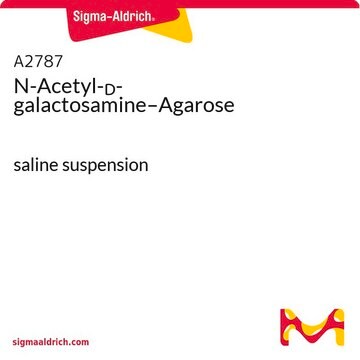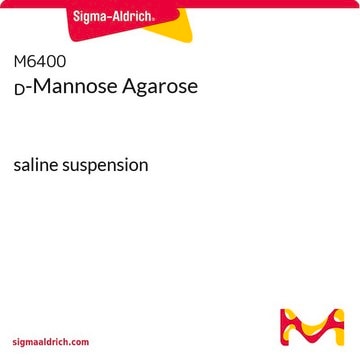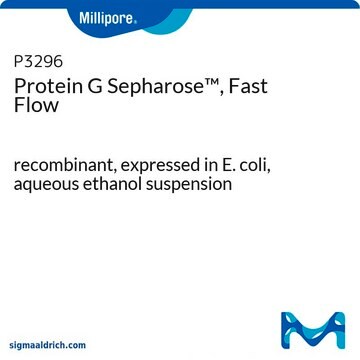This product is assayed for the ability to bind lectin from Arachis hypogaea. The lectin is loaded in a 0.5 M sodium chloride, 0.01 M sodium phosphate buffer, pH 6.8. The column is washed with the same buffer. The lectin is eluted in the same buffer containing 0.1 M alpha-lactose.
The resin can be regenerated by washing with 3-5 column volumes of 50 mM acetic acid, pH 3.0 containing 0.5 M sodium chloride, followed by 50 mM borate buffer at pH 7.0. The resin can also be washed with 6 M guanidine hydrochloride solution, adjust to pH 3 with acetic acid. The ligand on the resin is susceptible to hydrolysis at pH above 10.














